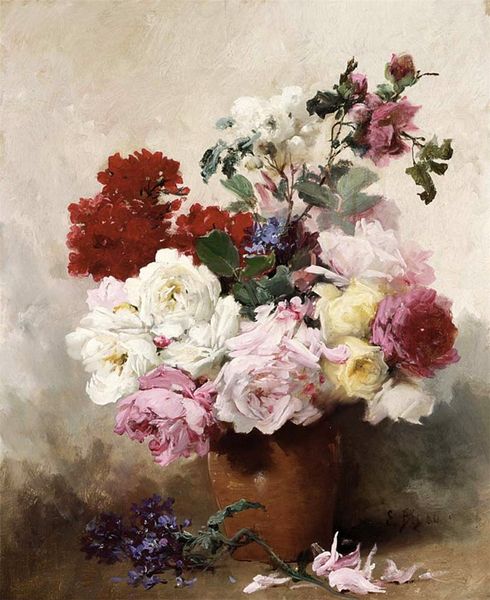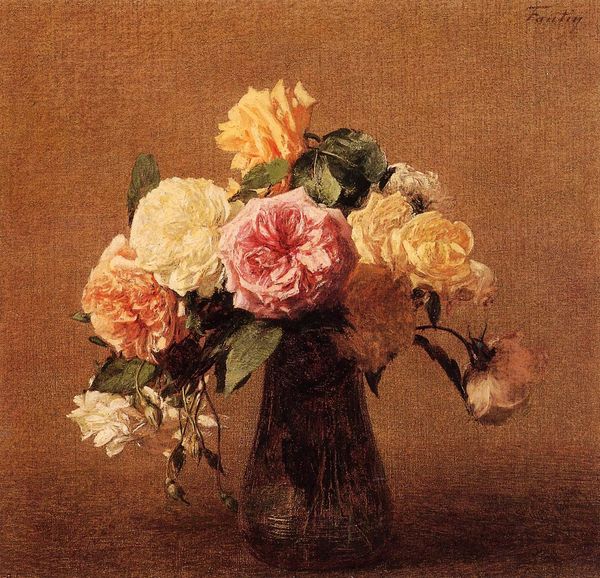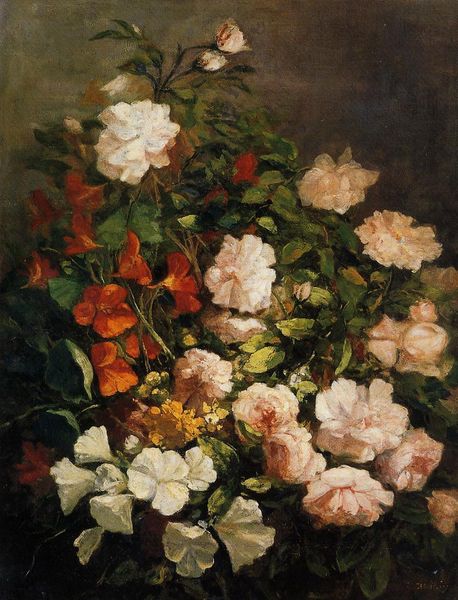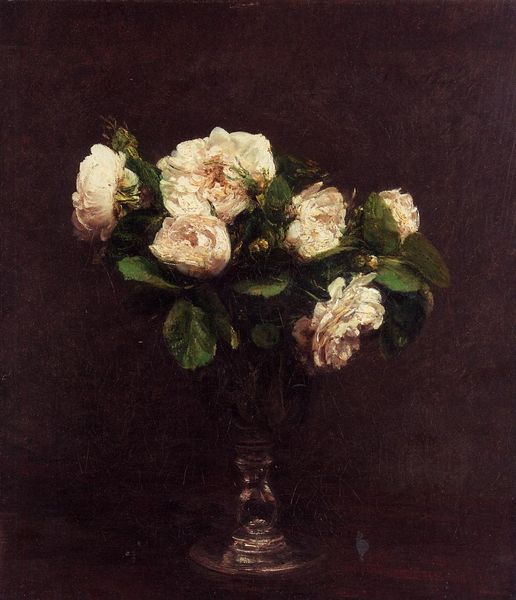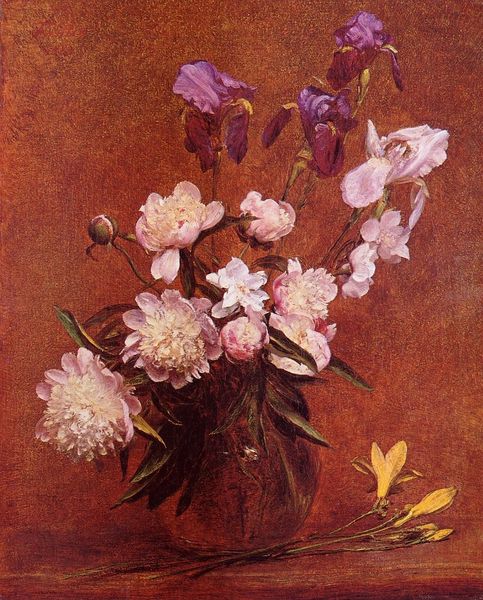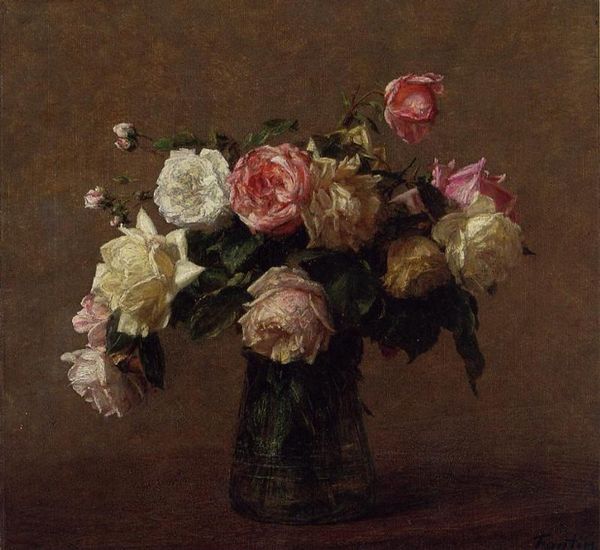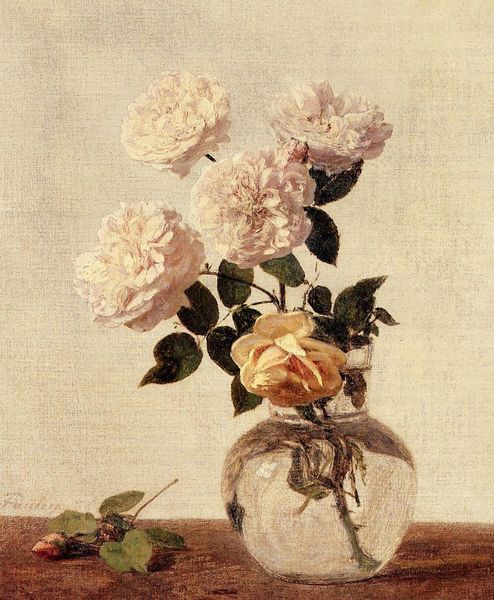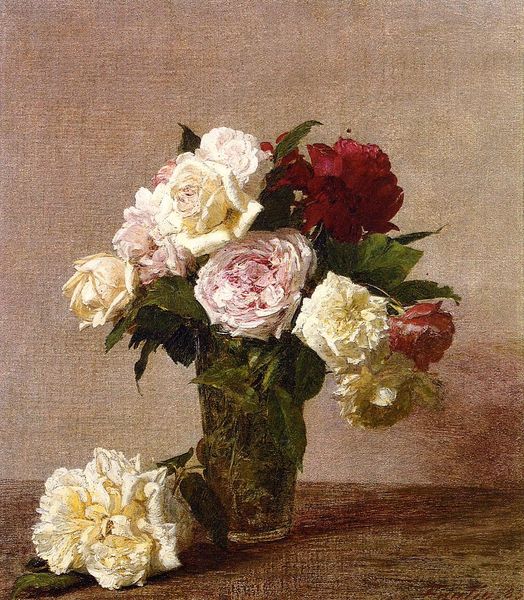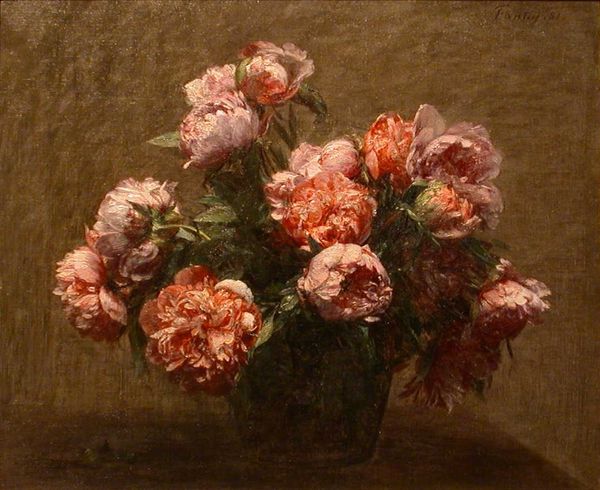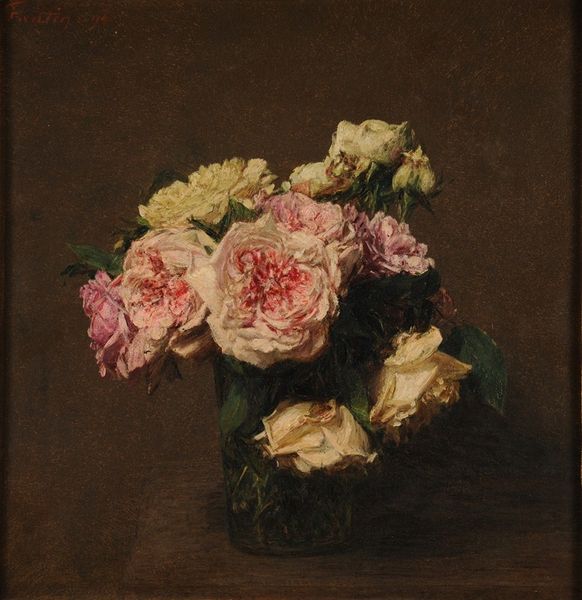
Copyright: Public domain
Editor: Right, let's talk about "Roses," an 1882 oil on canvas by Henri Fantin-Latour. It's... well, it’s quite traditional, almost sweetly so, and all those soft white blooms seem ready to spill right out of the painting! What draws your eye when you look at this, Professor? Curator: Sweetly, perhaps, but look closer! See how Fantin-Latour uses that subdued background and impasto to make those roses practically leap off the canvas? For me, there’s a push and pull at play here, a tender wrestling between capturing their fleeting beauty and grappling with their inevitable decay. It reminds me of a passage from Proust – don't you think there is almost a madeleine-like quality to the painting's emotional effect? Editor: That's a great point – there *is* that hint of the ephemeral. Is that typical of his flower paintings? Curator: Absolutely! Fantin-Latour painted these still lifes primarily to support himself, and they were quite popular with the English market. Yet, he imbues them with such personal, romantic sentiment that they transcend mere commerce. Each brushstroke seems like a quiet meditation. I mean, really, look at the one rose that’s fallen… almost like a tear, wouldn’t you say? Editor: I see what you mean. It's not just a pretty picture; it's making us think about the passing of time. Curator: Precisely! The artist's struggle to seize the bloom and stop the clock, if you will, is, in fact, what moves us centuries later. He may have wanted us to be reminded of a lost love or a melancholic moment of beauty. What did you take away from our viewing? Editor: Definitely a deeper appreciation for what seems, at first glance, a very straightforward floral piece. Thanks, Professor! Curator: My pleasure! It is the heart that sees truest, as the Little Prince reminds us, isn't it?
Comments
No comments
Be the first to comment and join the conversation on the ultimate creative platform.
